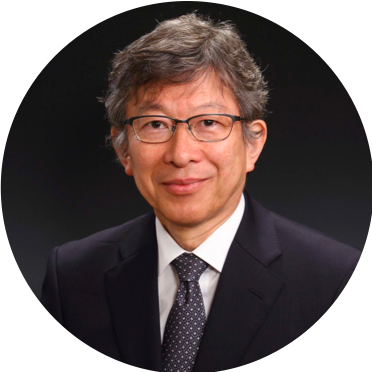1st TC-R²P Workshop @ IROS 2019
 |
Workshop topicIntelligent Robotics Research: How to Close the Gap from Research Lab to the Real-World |
|
We will hold our first TC-R²P Workshop at IROS 2019 in Macau. Please join our Committee to take part in this workshop, where we will have experts from both Academia and Industry discussing the latest challenges and breakthroughs in the field.
 Date & Time
Date & Time
- Date: November 8, 2019
- Workshop duration: Half-day (a.m.)
 Keynote Speakers
Keynote Speakers
 |
Video message: Robotics Research for PracticalityProf. Rodney BrooksMIT/Rethink Robotics |
A video-letter with some insight and notions on practicality in Robotics, and overview of the Technical Committee. You can watch the video here!
|
|
Leveraging research results through technology development at KUKADr. Rainer BischoffKUKA Robotics |
The role of Corporate Research at KUKA is to take over best practice from academic research and further develop it to make it fit to future KUKA products and solutions. The talk will give insights in how Corporate Research at KUKA works and present a few highlights from successful cooperative research and technology transfer projects.
|
|
Robotics and Mechanisms Design for Robots on DemandProf. Tim LuethTechnical University of Munich |
Researchers who have already been working in the field of robotics for several decades have the impression that there are obviously major barriers, to be able to realize fast and targeted robots that are reliable, suitable for everyday use and inexpensive. The only robots that visibly belong in this category are the vacuum cleaner robots, which go back to Rodney Brooks, but whose functionality was already described at the end of the 80s, i.e. 30 years ago. Since then, sensor technology, computing power and new methods such as deep learning have improved enormously and promise the solution of autonomous robotics. There is a big discrepancy between the promises of robotics and reality. In my opinion, this is due to the lack of competence to automatically design functioning robots or mechanisms for a task. In the lecture design methods are described, with which automated robots can be designed. The application of my research group is typically surgery for which we have been developing instruments, navigation systems and robots for more than 20 years.
|
|
Challenges and Opportunities of RoboticsProf. Kazuhiro KosugeTohoku University |
We are facing global issues, such as population aging, global warming, urbanization, etc. Many of the issues will be very difficult to solve by today’s technology. We need to overcome the issues to survive by advancement of science and technology. In this presentation, we first consider challenges and opportunities for robotics, then consider how robotics foundations will be enriched through the development of robot systems for real issues. Several research examples from our laboratory illustrate the issues relating to the development of new robot system.
|
|
Research on Multi-robots self-regulated Manufacturing Technology for Large Complex ComponentsProf. Bo TaoHuazhong University of Science & Technology |
Large and complex components are widely used in the field of aerospace, energy and rail transportation and so on. Since the accuracy and surface roughness of the free-form surfaces are essential for improving the air or hydrodynamic performance of the components, it is important to perform the advanced machining technology to realize the high precision and surface quality manufacturing. The key issue in the processing of large and complex components lies on the high positional accuracy requirement and the surface quality control during processing. Compared with the CNC machining, mobile robots have the advantages of high flexibility, large working space, environmental adaptability and parallel coordination. Therefore, mobile robots can be used as the execution of manufacturing equipment. By taking advantage of the flexibility of robots, and digitalizing the work experience into robotic system, it is possible to make the robot as a tireless "skillful craftsman". Thus, the machining process becomes intelligent from automatic. This provides a new solution for the large and complex components manufacture. This report will combine my research in the field of robotic intelligent manufacturing, and share the research and application experiences of our research team in the field of the robotic mobile processing for large-scale complex components.
|
|
Community Service Robot to create new Robot MarketProf. Nobuto MatsuhiraShibaura Institute of Technology |
In Japan, robots are strongly expected to support daily human activities in such an ageing society with a declining birthrate. However, there are many problems to be solved and the application service by robots is not clear as to be a big market. Thus, we have proposed the community service robot to cope with such social problems, collaborating with many universities, institutes and companies, using common software platforms such as robot technology middleware (RTM), ROS and robot service network protocol (RSNP). So far, we have verified the robot network with about 20 robots via field experiments. To create the service robot market, we aim to develop the robot network platform up to 100 robots with common structure to provide various services in 2020.
 Panel Discussion Members
Panel Discussion Members
| PANELISTS | |||
 Prof. Nobuto Matsuhira Prof. Nobuto MatsuhiraShibaura Institute of Technology |
 Prof. Kazuhiro Kosuge Prof. Kazuhiro KosugeTohohu University |
 Prof. Tim Lueth Prof. Tim LuethTechnical University of Munich |
 Dr. Rainer Bischoff Dr. Rainer BischoffKUKA |
| MODERATOR | |||
 Dr. Mahdi Hassan Dr. Mahdi HassanUniversity of Technology Sidney |
|||
 Workshop Program
Workshop Program
| 9:00-9:05 | Opening Address | |
| 9:05-9:10 | Video Message from Committee Member Prof. Rodney Brooks | |
| 9:10-11:00 | Keynote / Invited talks | |
| 11:00 - 11:30 | Coffee break | |
| 11:30 - 12:30 | Panel discussion | |
| 12:30 - 13:00 | Wrap-up and discussion on future plans |
 Additional Resources
Additional Resources

